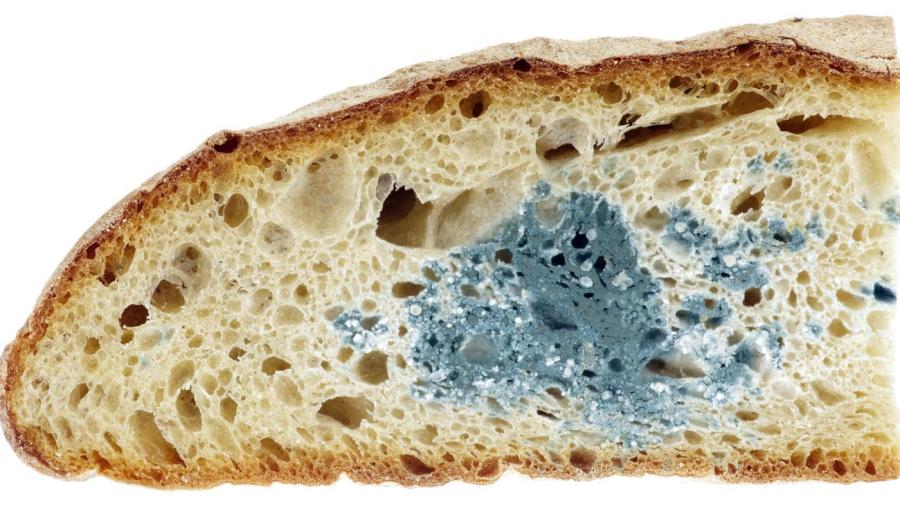Which Type of Bread Molds the Fastest?

Bread with high moisture content grows mold the fastest. Thus, dark bread like rye, bran, oat and Boston loaves develop mold much faster than dense and dry variants. Moisture in the environment also plays a critical role in how quickly mold spots develop on any type of loaf.
Moisture is the No. 1 element behind determining how quickly mold spots appear on any kind of bread. The internal dampness of a type of bread is a major determining factor in neutral environments, so the more light and moist a slice, the sooner it shows growth. Darker breads tend to hold more moisture, but this does not apply to fruit cake or fruit loaves because these are similar in color but not texture. White and potato bread fall in the middle range for decay with spores appearing less quickly than more moist bread, but more rapidly than on dryer loaves.
The rate of decay and molding is also influenced by the amount of preservatives present. Commercially distributed bread contains many chemicals that make it stable for weeks of transportation and sitting on shelves, so even more moist breads of these types take longer than fresh varieties before showing mold spots. Sourdough bread of either manufactured or homemade types never grows mold because of its high acidity.





